
Édouard Vuillard In bed 1891



Tucker Alex
Tucker Carlson to Alex Jones: "I'm really here on principle, because there's nothing you've ever said in your entire life or done in your entire life that's scarier or more threatening to our country than what they're doing to you right now. So the government taking broadcaster… pic.twitter.com/dwVYSznJ9K
— Camus (@newstart_2024) June 14, 2024

Black vote
https://twitter.com/i/status/1801357121130287270

77
Democrats Went Too Far. No One Can Miss Corruption This Obvious
“It's amazing that a man of 77 years who's been in the public eye for most of his life can make it through multiple business transactions, like, multibillion dollar transactions, build half of New York, and never be… pic.twitter.com/xESsWigMYP
— Wall Street Apes (@WallStreetApes) June 13, 2024

Logan Paul
The Donald Trump Interview 🇺🇸
Our first full-length podcast on X… pic.twitter.com/aRiforlhca
— IMPAULSIVE (@impaulsive) June 13, 2024


“..it’s clear that foreigners are fighting on Ukraine’s side, that their participation is systematic rather than accidental, and that at least some of them are citizens of Western countries.”
• Russia and NATO Are Drifting Towards A Major War (Timofeev)
Is it possible that NATO forces could become directly involved in the military conflict between Russia and Ukraine? Until recently, such a question seemed very hypothetical given the high risks of escalation of the military confrontation between the US-led bloc and Russia into a large-scale armed conflict. But this scenario should be taken seriously now. The direct participation of individual NATO countries or the entire bloc in hostilities could gradually spiral out of control. Crossing red lines can lead to the belief that there will be no consequences for engaging in war. The result of such movements can manifest itself at an unexpected moment and lead to a much more dangerous situation than the current one. Strictly speaking, NATO countries have long been involved in the conflict. This takes several forms.
First, Western countries provide Kiev with substantial financial and military assistance, including increasingly advanced and destructive weapons systems. As the stockpiles of Soviet-style kit in the arsenals of the USSR’s former allies in the Warsaw Treaty Organisation have been depleted, the Ukrainian army is receiving more Western systems and ammunition. So far, mass deliveries have been limited by the production capacity of the Western defence industry and size of existing stockpiles. But if hostilities are prolonged, industrial capacity has the potential to grow. Increasing supplies are also inevitable in the event of a peaceful pause, which would allow Ukraine to prepare for a new phase of hostilities. Russia can hardly hope that the West lacks the political will and resources to increase support for Kiev. Moscow appears to be preparing for the worst-case scenario, namely a steady increase in substantial and long-term military assistance to Ukraine. In addition to the supply of arms and ammunition, this aid includes the training of personnel, help with the development of military industry and infrastructure, and the reimbursement of expenses in other areas that allow Ukraine to focus its resources on the defence sector.
Second, Ukraine receives extensive Western support in the form of intelligence, including technical data from satellites, radars, reconnaissance aircraft, etc. The information received enables a wide range of operations, from scoping the theatre of operations to the identification of specific targets. Data providers can be selective in granting the Ukrainian side access. But its use in military operations against Russia is not in doubt. Third, military specialists who are citizens of NATO countries are involved in combat operations. Their role does not always appear to be official. They may be ‘volunteers’ or simply mercenaries, whose participation the authorities of their countries turn a blind eye to. Russian estimates put their number at around 2,000 in October 2023. Whether that is accurate or not, it’s clear that foreigners are fighting on Ukraine’s side, that their participation is systematic rather than accidental, and that at least some of them are citizens of Western countries.

“As soon as Kyiv says it is ready to do this and begins really withdrawing troops and officially renounces plans to join NATO, we will immediately — literally that very minute — cease-fire and begin talks..”
• Putin Names Two Conditions For Ending The War ‘This Very Minute’ (ZH)
Russian President Vladimir Putin in a Friday speech addressed the West’s efforts to host a major Ukraine peace summit in Switzerland this weekend. Though scores of world leaders will be there, Russia has not been invited, and China has snubbed the event citing that it’s pointless without Moscow’s representation given it is a party to one side of the war. Putin outlined his “conditions” for peace. He said for the military operation to be halted Ukrainian forces would have to withdraw from the four regions annexed by the Russian Federation. “Ukrainian troops must be completely withdrawn from the Donetsk People’s Republic, the Luhansk People’s Republic, Kherson and Zaporizhzhia regions,” Putin said in a televised address. Russia held referendums in late September 2022 for these war-torn oblasts, and the overwhelming majority of voters were in favor of being absorbed into Russia, which Kiev and the West called a “sham” election.
Putin also stipulated a second main condition for ending the war: Ukraine must reject ambitions to join the NATO alliance. “As soon as Kyiv says it is ready to do this and begins really withdrawing troops and officially renounces plans to join NATO, we will immediately — literally that very minute — cease-fire and begin talks,” Putin said in the talk given to a gathering of diplomats. Interestingly, Putin showed signs he could be willing to compromise when it comes to territory, which is a bit of the first and hopeful sign that he’s serious about finding ways to wind down the war. According to AFP: The Russian leader said he did not “rule out maintaining Ukrainian sovereignty” over the southern Kherson and Zaporizhzhia regions “on the condition that Russia has a strong land link with Crimea.”
But despite what appears to be very serious possible overtures, the Zelensky government has long maintained that it will not countenance negotiations or peace settlement until there is a full withdrawal of Russian armed forces from Ukrainian territory as existed pre-February 2022. The weekend Swiss peace summit is expected to focus on gaining full international backing for Zelensky’s 10-point peace formula, however international press has acknowledged this as still “a largely symbolic effort”. The sixth point of Kiev’s plan reads as follows: it calls on Russia “To cease the hostilities, Russia must withdraw all its troops and armed formations from the territory of Ukraine, plain and simple. Ukraine’s full control over its state border, recognized internationally, needs to be restored.”

“Our side will order a ceasefire and start negotiations the minute Kiev declares that it is prepared to take this decision and starts actual withdrawal of troops from those regions..”
• Putin Names Conditions For Ukraine Peace Talks (RT)
Ukraine must remove its troops from Russia’s new regions before any meaningful peace talks can begin, President Vladimir Putin has said. Moscow rejects Kiev’s claims of sovereignty over five formerly Ukrainian regions, four of which have joined Russia amid the ongoing hostilities. People in the Donetsk and Lugansk People’s Republics and Kherson and Zaporozhye Regions voted for the transition in late 2022, though hostilities continue in all of them. Ukrainian troops must be removed from these territories, Putin said on Friday at a meeting with Foreign Minister Sergey Lavrov and other senior Russian diplomats. “I stress: the entire territory of those regions as defined by their administrative borders at the time they joined Ukraine [in August 1991],” Putin stated.
“Our side will order a ceasefire and start negotiations the minute Kiev declares that it is prepared to take this decision and starts actual withdrawal of troops from those regions, and also formally informs us that it no longer plans to join NATO,” the Russian leader pledged. Putin outlined the conditions after condemning Kiev’s Western backers for allegedly preventing it from holding peace talks with Moscow while accusing Russia of rejecting negotiations.“We are counting on Kiev to take such a decision on withdrawal, neutral status, and dialogue with Russia, on which the future existence of Ukraine depends, independently based on the current realities and guided by the true interests of the Ukrainian people and not at Western orders,” Putin stated. At this point, Moscow will not accept a frozen conflict, which would allow the US and its allies to rearm and rebuild the Ukrainian military, Putin claimed. The full resolution of the issue will involve Kiev recognizing the four new regions as well as Crimea as part of Russia, he insisted.
“In the future, all those basic principled positions have to be enshrined in fundamental international agreements. Naturally, that includes the lifting of all Western sanctions against Russia,” Putin stated. Accepting these terms will allow everyone involved to turn the page and gradually rebuild damaged relations, the president said. Eventually, a pan-European security system that works for all nations on the continent could be created, Putin added, noting that Moscow has sought this outcome for years.The Russian president’s keynote remarks came ahead of a Swiss-hosted summit supposedly meant to further peace in Ukraine. Kiev has insisted that Moscow could not be invited to the event because it would try to “hijack” it by promoting alternatives to the “peace formula” pushed by the Ukrainian government. Putin claimed that the event was meant to distract public opinion from the “true roots” of the conflict, and that Vladimir Zelensky has usurped power in Ukraine after his presidential term expired last month. Nothing but demagoguery and accusations against Russia can come out of the Swiss gathering, he predicted.

“The room for compromise is diminishing like shagreen leather, together with the shrinking territory of the dying country.”
• Ukraine’s ‘Room For Compromise Is Diminishing’ – Medvedev (RT)
Russia has repeatedly sought to resolve the Ukraine crisis through diplomatic means since 2014, but Kiev and its Western backers have always responded with either “manipulation” or “deception,” former Russian President Dmitry Medvedev said on Friday. Now that the latest peace proposal has been offered by Russia, the time for compromise is running out, he warned. Kiev is about to face a “catastrophic scenario,” Medvedev, who currently serves as deputy chairman of the Russian Security Council, said in a statement published on his social media account. The former Ukrainian territories Kiev still lays claim to have officially become part of Russia as a result of referendums held there in 2022, Medvedev pointed out. “And this is forever.” Now, Moscow will only agree to peace talks if this fact is taken into account, he added.
“The room for compromise is diminishing like shagreen leather, together with the shrinking territory of the dying country.” The official was referring to the latest peace proposal put forward by President Vladimir Putin during his meeting with senior Russian diplomats on Friday. Moscow is demanding that Kiev withdraw its troops from all the regions that voted to join Russia in 2022 and forgo its plans to join NATO. In exchange, Russia is ready to order a ceasefire and start talks the moment Ukrainian officials agree to these terms. Medvedev described this weekend’s Ukraine peace conference in Switzerland as a “summit of the doomed” that will end in “total failure.”
Kiev has been actively promoting the conference, to which Russia has not been invited, to push its own peace plan. It includes the withdrawal of Russian troops from territories it claims as its own, a war crimes tribunal, and reparations. Medvedev dismissed Kiev’s peace proposal as a “stillborn formula,” commenting that its only purpose is to provide legitimacy to Vladimir Zelensky. Zelensky, whose presidential term officially expired in May, is nothing but an “usurper,” a “nobody” with “no real authority,” according to Medvedev. He has now seized power and “took the entire population hostage” while still “sending soldiers forth to die,” the Russian official concluded.

“..Ukraine received very generous peace terms in March 2022, but rejected them “on orders from the British.”
• Zelensky Responds To Putin’s Peace Offer (RT)
The terms Russian President Vladimir Putin outlined for ending the conflict are an “ultimatum” to Ukraine and as such unacceptable, Vladimir Zelensky has said. Speaking at a meeting with senior Russian Foreign Ministry officials on Friday, Putin said that Kiev would have to cede all the territory of four regions that chose to join Russia and guarantee it would never join NATO before peace talks could begin. “What can I say? These messages are ultimatum messages, they are nothing different than other ultimatums that he has made before,” Zelensky told the TV network Sky TG24 while attending the G7 meeting in the south of Italy. “He wants us to give up part of our occupied territories, but he also wants the unoccupied ones. He talks about regions of our country, and he won’t stop,” Zelensky claimed.
Zelensky’s characterization of Putin’s offer as an ultimatum was dismissed as “a wrong understanding, definitely,” according to Kremlin spokesman Dmitry Peskov on Friday. “This is a comprehensive, very deep and constructive proposal,” Putin’s press secretary told Izvestia. If the terms seem harsher than those Moscow proposed in the spring of 2022, he explained, that’s because “a different situation has arisen,” with four regions choosing to become part of Russia. Residents of Kherson and Zaporozhye Regions as well as the Donetsk and Lugansk People’s Republics voted overwhelmingly in September 2022 to leave Ukraine and join the Russian Federation. Kiev and its Western backers have denounced the vote as “rigged” and a “sham,” just as they refused to recognize Crimea’s return in 2014.
Peskov reminded Izvestia that Ukraine received very generous peace terms in March 2022, but rejected them “on orders from the British.” Ukrainian media and officials have confirmed that Boris Johnson, UK prime minister at the time, told them they should not accept any deal with Russia. Announcing the military operation against the government in Kiev, in February 2022, Putin said that Moscow intended to achieve the “demilitarization and denazification” of Ukraine and secure guarantees that Kiev would never join NATO or any other anti-Russian military bloc.

“There is no other conceivable reason to require more than 16 million American males to be automatically registered for the draft, other than to prepare for a large-scale war.”
• America Prepares for Global War, Restarts Draft for 18-26 Year Olds (Kucinich)
Our government is planning a big draft, conscripting millions of young Americans for an even bigger war! I call to your attention a Democratic amendment to the National Defense Authorization Act (NDAA), which was slipped into the almost trillion-dollar Pentagon war spending bill, by voice vote, in the House Armed Services committee. The Democratic Amendment to H.R. 8070, the National Defense Authorization (NDAA) reads: “Section 531. Selective Service System: Automatic Registration. SEC. 3. (a)(1) “Except as otherwise provided in this title, every male citizen of the United States, and every other male person residing in the United States, between the ages of eighteen and twenty-six, shall be automatically registered under this Act by the Director of the Selective Service System.”
This amendment is in the NDAA legislation and there is no pending amendment to strip it from the bill. So, when the NDAA passes, as early as this week, Congress will have taken steps to make automatic conscription the law of the land. Why an automatic draft? Members of Congress and the President have an obligation to explain to the American people to which foreign land will their sons, and perhaps their daughters, be sent to die? The U.S. has been in a continuous “State of Emergency” since September 11, 2001, which provides a president with over 100 powers he would not ordinarily have. Notwithstanding that the automatic draft provision will go into effect in a year, a presidential order invoking emergency powers and/or an Act of Congress, could readily move millions from their civilian lives to the front lines of a war. WHAT WE KNOW: We know that America is fomenting wars around the world We know that the military industrial complex controls our government We know that we are on the precipice of a global war, provoking aggression rather than resolution with Russia, China and in the Middle East.
The only winners in these wars are the war profiteers. They’re now going to take our children to fight in unnecessary, destabilizing, dangerous, debt-creating wars. Just today President Biden committed the U.S. to an additional decade of support for Ukraine’s war with Russia. There is no other conceivable reason to require more than 16 million American males to be automatically registered for the draft, other than to prepare for a large-scale war.
The Selective Service System is the vehicle by which individuals are inducted into the armed forces. This NDAA Automatic Registration amendment facilitates an efficient, large-scale draft. The new law will automatically register all males between the ages of 18 and 26. Selective Service will notify in writing every young American male that they have been registered and will prescribe regulations which can require the registrant to provide “date of birth, address, social security account number, phone number and email address….” There are members of Congress who advocate that young women also be included in any draft, which could bring to 32 million the number of Americans of draft-eligible age. The U.S. currently has over 1,300,000 men and women, career soldiers, as well as volunteers, serving in the all-volunteer armed forces.

“No longer will they be talking about Zelensky’s unrealistic expectation of having Russia leave the new territories. The West will now be saying, what about this offer? Can we do this offer?”
• Scott Ritter: West Has to Decide If It Wants Peace After Putin’s Proposal (Sp.)
President Vladimir Putin has outlined another proposal to solve the Ukraine crisis once and for all at a meeting with top diplomats at the Russian Foreign Ministry in Moscow, making clear that Moscow is not interested in freezing or postponing the conflict. According to the president, Russia is ready to cease fire and start negotiations once Ukraine begins to withdraw from the Donetsk and Lugansk People’s Republics and the Zaporozhye and Kherson regions within their administrative borders and officially renounces plans to join NATO. Additionally, Russia requires Ukraine to adopt a neutral, non-aligned, and non-nuclear status. “We are ready to sit at the negotiation table tomorrow,” said Putin. “Today, we made another specific, real peace proposal. If Kiev and the Western capitals refuse it, as they have previously, then ultimately, it is their matter, their political and moral responsibility for the continuation of bloodshed,” the president stressed.
Putin’s new peace proposal is a brilliant move, according to former US Marine Corps intelligence officer Scott Ritter. “A [Western] peace conference in Switzerland [from June 15 to 16] that was never going to succeed now has a completely different angle to it,” Ritter told Sputnik. “It will now be discussing the Russian peace initiative. No longer will they be talking about Zelensky’s unrealistic expectation of having Russia leave the new territories. The West will now be saying, what about this offer? Can we do this offer? The NATO summit won’t be about ‘How do we expand, how do we enlarge?’ It will be about ‘What do we do about the Russian peace proposal?’ This puts the West in the horns of a dilemma. That’s exactly where Russia wants them.” Ritter underscored that Russia isn’t looking for a ceasefire or freezing the conflict to make it fester any longer: “Russia’s looking for conflict resolution. They want a genuine peace plan.” The plan is based on the 2022 Istanbul communiqué while taking into account the reality on the ground, the former US Marine Corps intelligence officer noted.
The roadmap proposed by Vladimir Putin also meets the initial goals of the special military operation launched on February 24, 2022, i.e. de-militarization and de-Nazification, the military expert continued. “Demilitarization will occur through the negotiation process. When Ukraine commits to not being a member of NATO, this resolves a number of issues, such as what to do with all of this NATO equipment that has been accumulated by Ukraine. There’s no longer a need for it. It will go away. So too will the NATO advisors. Demilitarization has been accomplished.” “De-Nazification… Vladimir Putin made it clear that Volodymyr Zelensky is not the political future of Ukraine. Neither are the right-wing political parties that have produced Nazi-type organizations like the Right Sector, Svoboda*, Azov**, and other neo-Nazi-affiliated paramilitary and military organizations.
These will, of course, have to be done away with. But who’s going to do away with that? Russia’s not occupying Ukraine. This will be part of the post-conflict political rebuilding, restructuring of Ukraine. And again, once Ukraine has walked away from NATO and has assumed a position of genuine neutrality, this changes the domestic political dynamic inside Ukraine, empowering political entities that otherwise have been suppressed, the opposition that Volodymyr Zelensky has sought to silence over these many years,” Ritter explained. The military veteran pointed out that the Russian president has also made it clear that if the proposals are snubbed, the military confrontation will continue and the future requirements for peace could be very different.

“The deal is not a “treaty”, but an “executive agreement” since Biden didn’t seek a congressional approval to make it..”
• Biden’s 10-year Security Pact With Ukraine is Nothing But a PR Stunt (Sp.)
US President Joe Biden struck a 10-year security deal with the Kiev regime at the recent G7 Summit. Volodymyr Zelensky, whose presidential tenure expired on May 20, inked the agreement on behalf of Ukraine. Despite the White House calling the deal “historic” the US media says its future is in doubt. The deal is not a “treaty”, but an “executive agreement” since Biden didn’t seek a congressional approval to make it. Treaties, which require the consent of two-thirds of US senators, are legally binding agreements between nations; they become part of international law. Executive agreements are concluded on the authority of the incumbent president and don’t necessarily bind his successors. President Donald Trump tore apart his predecessor Barack Obama’s nuclear deal with Iran (which was not confirmed by Senate) in 2018. This illustrated the fragility of the executive agreement – which was also called “historic” in July 2015.
Recent YouGov, Yahoo News, Emerson polls show Trump leads Biden in the 2024 presidential race. Trump is also leading Biden in key battleground states which provided for Biden’s victory in the 2020 elections, as per RealClearPolitics.
Even if Biden wins in 2024, his second tenure will end in 2029, meaning the fate of the 10-year accord will depend on his successor. Treaties aren’t immune to the US president’s unilateral action: In 1978, President Jimmy Carter withdrew from 1954 Mutual Defense Treaty with the island of Taiwan. President George W. Bush tore apart the Anti-Ballistic Missile (ABM) Treaty with Moscow in 2002. Last but not least, in the absence of clarification of the Constitutional Court of Ukraine, Zelensky’s legitimacy as a signatory is null and void: under the nation’s Constitution, the presidential tenure is limited to five years and is not subject to extension under martial law.

“..the lack of will and responsibility on part of the Western elites is the main obstacle on the road towards a durable peace..
• Moscow Reveals Further Steps After Putin’s Ukraine Offer (RT)
Russia’s diplomats will communicate President Vladimir Putin’s latest Ukraine peace proposal to Western leaders in “in meticulous detail,” Foreign Minister Sergey Lavrov told journalists on Friday. Earlier the same day, the head of state set conditions for peace negotiations with Kiev. The Russian president’s initiative includes a demand that Kiev withdraw its troops from all former Ukrainian territories that joined Russia following referendums in the fall of 2022 and abandon its plans to join NATO. Moscow is ready to order a ceasefire and start negotiations “the minute” Ukraine agrees to those terms and starts the withdrawal, he told Lavrov and other senior Russian diplomats at a meeting.
Following the event, Lavrov told journalists that he believes the world is already well-aware of the president’s proposal. Moscow has no plans to issue the offer in a formal document, the minister said. Russia’s ambassadors will nevertheless hand the text of Putin’s speech to the relevant foreign officials and clarify the Kremlin’s stance, he said. “We won’t chase after anyone,” Russia’s top diplomat said, adding that Moscow would simply make its position clear and “look at the reaction” of the foreign nations. He stated that his ministry plans to raise the issue at the meetings of BRICS and the Shanghai Cooperation Organization as well as in talks with China and the Latin American and African nations.
The minister also expressed his hope that the initiative would be discussed at the ongoing G7 summit in Italy and at the conference on Ukraine which Switzerland is set to host this weekend. When further asked by journalist Pavel Zarubin if he believes the latest peace initiative could lead to some meaningful dialogue with the West, Lavrov responded by saying that “hope is the last to die.” “Those that have ears to hear, let them hear. Those that have brains, let them understand,” the minister said, adding that, although he was “not sure that everything is alright with those organs” when it comes to the Western politicians, he still hopes that some good can come of it.
Putin’s proposal was also lauded by Valentina Matvienko, the head of the Russian Federation Council – the upper house of the national parliament. She described the initiative as a “real peace offer” opening the “only possible path towards the end of the Ukraine conflict.” The Russian president’s words also made it clear that “the lack of will and responsibility on part of the Western elites is the main obstacle on the road towards a durable peace,” she said. The initiative came just a day before the start of the Swiss-hosted summit supposedly meant to further peace in Ukraine. Kiev insisted that Moscow could not have been invited to the event because it would try to “hijack” the agenda by presenting alternatives to the plan being proposed by the Ukrainian government. Putin stated that the meeting was only meant to distract the public opinion from the real roots of the conflict.

“..when Bennett traveled to Kiev to present Moscow’s proposal to the Ukrainian government, it was rejected, and the Israeli leader was branded a Russian sympathizer..”
• Russia Was Ready To Withdraw From Southern Ukraine – Putin (RT)
Russia was open to withdrawing its troops from Kherson and Zaporozhye Regions early in the Ukraine conflict on the condition that Kiev agreed to an uninterrupted land connection between Crimea and the mainland, President Vladimir Putin stated on Friday. Speaking at a meeting with the country’s senior diplomats, Putin revealed that in early March 2022, as Russian troops were advancing into southern Ukraine, a senior foreign politician representing the West proposed mediating the conflict between Moscow and Kiev. While Putin did not name the leader, former Russian President Dmitry Medvedev identified him as then-Israeli Prime Minister Naftali Bennett. According to the Russian president, Bennett asked officials in Moscow at the time why Russian troops were operating in Kherson and Zaporozhye Regions, given that their stated goal was to help Donbass.
Bennett was told the decision to send Russian troops to those regions was made based on the plans drawn by the General Staff, which sought to bypass heavily fortified Ukrainian positions in Donbass, Putin explained. According to the Russian leader, when Bennett asked whether Russian troops would remain in Kherson and Zaporozhye Regions after the end of the conflict, Putin said he was open to the idea of pulling them back to their bases. “I replied that, in general, I do not rule out that Ukraine will retain its sovereignty over these territories, provided that Russia will have a solid land connection to Crimea.” Putin noted that to secure the guarantee, Moscow and Kiev would have to sign a legally binding “servitude” agreement, a property law that ties rights and obligations to the ownership or possession of land. The deal would then have to be finalized with the involvement of the UN Security Council, as well as local citizens and the Russian public.
However, when Bennett traveled to Kiev to present Moscow’s proposal to the Ukrainian government, it was rejected, and the Israeli leader was branded a Russian sympathizer, Putin noted. Now, this proposal is off the table, given that Kherson and Zaporozhye Regions, along with the two Donbass republics, voted to join Russia in public referendums in the fall of 2022, Putin stated. “There can be no talk of violating our national unity… This question is closed forever and beyond any debate.” At the same time, Putin signaled that Moscow was ready for talks with Ukraine on the condition that Kiev fully withdraws its troops from Donbass, Kherson, and Zaporozhye regions and abandons plans to join NATO. But the proposal has been rejected by Kiev, which insists upon returning the country to its 1991 borders.

“On March 29, 2022, we withdrew our troops from Kiev because we were assured that it was essential to create conditions for the conclusion of the political negotiating process..”
• Russian Troops Never Intended To Capture Kiev – Putin (RT)
Russian forces did not plan to storm Kiev when they advanced towards the Ukrainian capital in the first weeks of the conflict between the two countries, President Vladimir Putin has said. During a meeting with his Russia’s top diplomats on Friday, Putin noted continued “speculation” in Ukraine and the West about the intentions of Russian units when they reached the outskirts of Kiev in late February 2022. “But there was no political decision to storm the city of 3 million, no matter what anyone says due to their lack of thought,” Putin insisted. According to the president, the Russian advance towards Kiev was “nothing more than an operation to persuade the Ukrainian regime to [make] peace.” “The troops were there to motivate the Ukrainian side to engage in negotiations, to try to find an acceptable solution and this way end the war unleashed by Kiev against Donbass back in 2014,” he said.
The conflict between the Ukrainian government and the People’s Republics of Donetsk and Lugansk, which erupted after the Western-backed coup in Kiev in February 2014, “posed a threat to the security of our country, to the security of Russia,” Putin stressed. The move by Russia did result in talks that led to agreements that “in principle, suited both Moscow and Kiev,” he said, referring to the negotiations that took place between the two sides in the Turkish city of Istanbul in late March 2022. “On March 29, 2022, we withdrew our troops from Kiev because we were assured that it was essential to create conditions for the conclusion of the political negotiating process,” the president recalled. “Our Western colleagues” insisted back then that the Ukrainian authorities “cannot sign such agreements… with a gun to their head,” he added.
However, Kiev and its Western backers have been claiming that the Russian withdrawal from the area of the Ukrainian capital was not a goodwill gesture by Moscow, but the result of military successes achieved by Kiev’s troops. Already in April 2022, US President Joe Biden said “the ‘Battle of Kiev’ was a historic victory… won by the Ukrainian people with unprecedented assistance by the US and our allies.” The next day after the Russian troops left, the Ukrainian leadership seized their participation in the negotiating process, staging “a provocation” in Bucha, Putin said.On April 1, 2022, the Zelensky government blamed the Russian military for massacring civilians in the town of Bucha near Kiev. Moscow denied those accusations, saying that the purported evidence of the crimes was fabricated. “I think it’s clear now that this dirty provocation was needed to somehow explain the rejection of the results that had been achieved during the negotiations. The path to peace was again turned down,” the Russian leader stressed.

“..they rest on the source credibility of being “non-governmental” and merely devoted to human rights, which increases the effectiveness of their messaging..”
• US Government Uses NGOs To Corrupt ‘Civil Society’ Around The World (Diesen)
In the West, and beyond, pressure groups operating under the banner of “human rights non-governmental organizations” (NGOs) have become key actors in disseminating war propaganda, intimidating academics, and corrupting civil society. These outfits act as gatekeepers determining which voices should be elevated and which should be censored and canceled. Civil society is imperative to balance the power of the state, but governments are increasingly seeking to hijack it through NGOs they fund. They can enable a loud minority to override a silent majority. In the 1980s, the Reagan doctrine exacerbated the problem as these “human rights NGOs” were financed by the government and staffed by people with ties to intelligence agencies, to ensure civil society won’t deviate significantly from government policies.
The ability of academics to speak openly and honestly is restricted by these gatekeepers. In a case in point today, NGOs limit dissent in academic debates about the great power rivalry in Ukraine. Well-documented and proven facts that are imperative to understanding the conflict are simply not reported in the media, and any efforts to address these facts are confronted with vague accusations of being “controversial” or “pro-Russian,” a transgression that must be punished with intimidation, censorship, and cancellation. I will outline here first my personal experiences with one of these NGOs, and how they are hijacking civil society. The Norwegian Helsinki Committee is financed by the US government and CIA-cutout the National Endowment for Democracy (NED). They regularly publish hit pieces about me and rarely miss their weekly tweets that label me a propagandist for Russia. It is always name-calling and smearing, rather than anything that can be considered coherent argument.
The standard formula for cancellation is to shame my university in every article and tweet for allowing academic freedom, with the implicit offer of redemption by terminating my employment as a professor. Peak absurdity occurred with a seven-page article in a newspaper in which it was argued I’d violated international law by spreading war propaganda. They grudgingly had to admit that I have opposed the war from day one, although for a professor in Russian politics to engage with Russian media allegedly made me complicit in spreading war propaganda. Every single time I am invited to give a speech at any event, this NGO will appear to publicly shame and pressure the organizers to cancel my invitation. The organization also openly attempts to incite academics to rally against me to strengthen their case for censorship in a trial of public opinion. Besides whipping up hatred in the media by labeling me a propagandist for Russia, they incite anonymous online troll armies such as “NAFO” to cancel me online and in the real world.
After subsequent intimidations through social media, emails, SMS and phone calls, the police advised me to remove my home address and phone number from public access. One of the Norwegian Helsinki Committee recently posted a sale ad for my house, which included photos of my home with my address for their social media followers. The Norwegian Helsinki Committee also infiltrates and corrupts other institutions. One of the more eager Helsinki Committee employees is also a board member at the Norwegian organization for non-fictional authors and translators (NFFO) and used his position there to cancel the organization’s co-hosting of an event, as I had been invited to speak. The Norwegian Helsinki Committee is also overrepresented on the Nobel Committee, to ensure the right candidates are picked.
Why would a humanitarian NGO act like modern Brownshirts by limiting academic freedom? One could similarly ask why a human rights NGO spends more effort on demonizing Julian Assange rather than exploring the human-rights abuses he exposed. This “human rights NGO” is devoted primarily to addressing abuses in the East. Subsequently, all great power politics is framed as a competition between good values versus bad ones. Constructing stereotypes for the in-group versus the out-groups as a conflict between good and evil is a key component of political propaganda. The complexity of security competition between the great powers is dumbed down and propagandized as a mere struggle between liberal democracy versus authoritarianism. Furthermore, they rest on the source credibility of being “non-governmental” and merely devoted to human rights, which increases the effectiveness of their messaging.

“For a group claiming to seek “Our Children’s Trust,” this activist group seems to be deliberately abusing children’s trust.”
• Fossil Fuels: The Best-Kept Secret in Our World Today (RCW)
Apparently, you can litigate anything these days, and it’s gotten far more insidious than suing McDonald’s over hot coffee being, you know, hot. A new climate activist group called Our Children’s Trust is suing state and federal government agencies on behalf of individual children, claiming that fossil fuel regulators are negligently ruining their future. That children should feel entitled to come of age under a specific set of favorable environmental and political circumstances — and to demand punishment for individuals they disagree with — isn’t just a testament to the egocentrism dominating the 21st Century. It also exposes our culture’s deeply warped understanding of climate science, which, surprisingly to many of us, actually shows global warming has no meaningful negative effects on our lives or our environment.
In fact, we have fossil fuels to thank for the twenty-first century for being the best time in human history to be alive. Unfortunately, it’s the best-kept secret in our world today. If we really want to earn “our children’s trust,” we should teach them the truth instead of foisting crippling and needless anxiety on an entire generation. Contrary to the attention-grabbing clips of forests burning and shock-inducing statistics about record-high temperatures, modern climate science suggests that warming is likely to remain mild and manageable while our resilience continues to improve. In fact, despite average global temperatures increasing about 1° Fahrenheit and our population quadrupling in the last century, climate-related disasters claim 99% fewer lives.
Our resistance to severe weather events (which actually have remained consistent or even declined in recent decades) is actually growing at a faster rate than non-weather-related natural disasters like volcanoes and earthquakes. The alarmists want you to believe a changing climate is jeopardizing human lives; however, the opposite is true. Our environment is also better than ever. The U.S. has cut air pollution by nearly 80% in the last 50 years and ranks number one in the world for access to clean drinking water. In fact, those infamous greenhouse gases may actually help the planet. Mild increases in atmospheric carbon dioxide create a “global greening” effect that stimulates plant growth, which both helps natural ecosystems and makes agricultural production more efficient.
Meanwhile, this is the best time in human history to be alive, thanks largely to widespread access to affordable, reliable energy. Children today have a far greater chance of living a long, healthy, fruitful life than ever before. Around the world, in both developing and developed nations, poverty has plummeted and people are enjoying the tangible, life-improving benefits of lower infant and child mortality, better nutrition, improved education, lower infectious disease rates, more economic opportunity, gender equality, and longer lives. It’s no coincidence that global quality of life spiked and has continued to improve consistently since the Industrial Revolution — or that communities without access to electricity are still plagued by poverty, danger, and disease. For a group claiming to seek “Our Children’s Trust,” this activist group seems to be deliberately abusing children’s trust.

“It appears, however, that we do not want it back, that the lockdown mode continues to tantalize..”
• The Confiscation of Reality (Sinead Murphy)
The UK Meteorological Office has just reported that we have enjoyed the hottest May on record. Meanwhile, those of us who have lived in the UK during May have endured unseasonal cold and rain, and have complained to one another constantly about it. Welcome to the age of abstraction, when lived experience is irrelevant and theoretical constructions carry the day – when what is deemed right and true is unmoored from what is actually happening here and now. Over four years ago, Covid lockdowns staged a dramatic confiscation of present reality. The question is, did we ever get it back? When the UK government ordered its first lockdown at the end of March 2020, the present reality was put on hold – businesses were shut, schools closed, social activities banned, and human interactions restricted. Chaos and suffering inevitably ensued. But in the midst of the misery, there arose a new possibility.
With present reality in abeyance, we were freed of its reality check. And we began to indulge in a new and joyous expectancy, of a wonderful future to revive a glorious past. ‘We’ll meet again,’ Queen Elizabeth assured us, reprising in her words and presence a fondly recalled togetherness of the last world war and promising its restoration as if it had only just been paused – as if the decades-long decimation of community and family and individual had never happened, as if only a temporary order to Stay Home stood between us and a lost world. This new possibility was tantalizing and quickly took hold of Middle England, the BBC-believing bastion of British Values, bent ever more implausibly on keeping calm and carrying on. By 2020, this beleaguered demographic had been all but spent from spotting certainties and consolations on the horizon of Left and Right, to forestall a looming vertigo at elite interests dashing its hopes from above and state-reliant deplorables whose fate beckoned from below.
Middle England, front and centre of policy and institution, had long been demoralized by its present reality: Consigned to jobs made ever more bullshit by the erosion of ambition and discipline; flip-flopping between debt and the dregs of old desires; addled by precarity and the virtuosity that survives it; overseeing the retreat of human sympathy everywhere and applying for relief to anxiously awaited festivals that never failed to disappoint. Lockdowns’ suspension of this reality was in itself a great boon. But greater still was what followed: unimpeded anticipation, of a happy tomorrow to follow a happy yesterday, in which all we would do because all we had done was Hug Granny and Play Whist and Toast Marshmallows and Sing Carols. This was not nostalgia. It was infinitely more potent. mIn nostalgia, the past is glorified as what is dead, as what is ‘vintage’ or ‘retro,’ as what can therefore only be remembered, however wistfully. In lockdown, the past was reanimated, suddenly reframed as what would be again once universal cocooning came to an end.
Lockdowns relieved us of the one thing that had stood between us and fantastic recollections of Digging For Victory and Winning At Cribbage: present reality. We were free now to regret the past, not hopelessly as what was lost and gone, but hopefully as what had just been put on hold and would soon resume once things got back to normal. Yes, we still went through the present realities of 2020 and 2021. We ate food and washed clothes and logged on, and drank too much and fought too hard and lost our sense of purpose. But suddenly, all of that was in parentheses – not real at all, just for now. Lockdowns achieved a transfer of the reality-effect from an inglorious present, sodden with disappointment, to a host of abstract ideas plundered from an invented past and projected to an inflated future. Over four years on, we are no longer supported in our exemption from present reality by government orders to Shelter In Place. Present reality is returned to us, after a fashion. It appears, however, that we do not want it back, that the lockdown mode continues to tantalize.
The reluctance with which many have relinquished their facemask has surely warned of this. As has the ongoing normalization of work-from-home. But there is another and more insidious aspect to our cleaving to lockdowns’ suspension of present reality: our growing enthusiasm for theoretical constructions for which present reality is irrelevant. During lockdowns, we plundered the almost-dead stock of yesteryear for content for the new mode of fond expectancy – abstract ideas of Dunkirk Spirit and Oh! What A Lovely War were hastily put abroad, adorned with Union Jack bunting, mugs of builders’ tea, allotment lemonade, and royal memorabilia. But already before lockdowns ended, the stock of abstract ideas began updating. The widely disseminated death of George Floyd launched a Black Lives Matter theme complete with its cartoon fist, and the rainbow of Gender was a seamless segway from the I Heart NHS refrain that had played ad nauseam for Covid. As lockdowns receded, we were encouraged to extend our exemption from present reality by a growing fund of available abstractions: Climate, Health, Equity, Security, Safety, Identity…

“.. those who continue to peddle the junk conjured by the Israeli propaganda machine will merely expose themselves as unserious buffoons..”
• The Afterlives of Lies (Patrick Lawrence)
Last Friday, while President Joe Biden, French President Emmanuel Macron and other Western leaders, along with the reporters who clerk for them, were in Normandy busily airbrushing out the Red Army’s heroism in defeating the Reich 80 years ago, something truer to history occurred in the pages of The Times of London. Under the headline, “Israel says Hamas weaponized rape. Does the evidence add up?” two investigative reporters, Catherine Philp and Gabrielle Weiniger, decisively shredded the dense fabric of lies on this topic, woven these past eight months by the Israelis, Western media, freakishly obsessed Zionist sympathizers and various feminist poseurs.Philp and Weiniger have produced an exceptional piece of journalism, the virtues of which I will shortly consider. For now, just this: You will never read a piece of this integrity on this side of the Atlantic — and certainly never in The New York Times, whose infamous dishonesty in the matter of alleged sexual violence in the Gaza crisis has few matches in the history of the once-but-no-longer newspaper of record.
But the significance of The Times piece extends well beyond its quality as first-rate work. Mainstream media have at last reported on the monstrous propaganda operation that has fabricated lurid allegations of sexual abuse on the part of Hamas militias. The surface of silence has finally been disturbed. The historians will have a record with which to work. And the record will include, as reflections in a mirror, the base derelictions of other major media — The New York Times, the BBC, the wire services, and so on down a long list — as they collaborated with the Zionist state to advance this edifice of lies to justify the barbarities of the Israel Occupation Forces. (And let us rename these savages in uniform.) [Three Israeli experts claim their comments were misrepresented in The Times of London piece.]
I liked Aaron Maté’s remark when he posted a link to The Times piece on X soon after it came out: “Establishment media starting to catch up with independent journalists and a squirrel Twitter account” – the latter a reference to the man, woman, or entity that flagged the piece when it was published last Friday. Just the point, or one of many. Various independent publications, notably but not only The Grayzone, Mondoweiss, Electronic Intifada and The Intercept, were swift to expose the Israelis’ aggressive propaganda op when, with Jeffrey Gettleman’s breathtakingly counterfeit pieces in The New York Times last December, the lying got entirely out of hand. These publications kept the light shining on a story that otherwise would have disappeared in darkness. We see in their reports the increasing power of independent media to force accurate accountings of events into the record. In this case if not in many others, those airbrushing the picture failed.
Answering the question posed in the headline atop their piece, Philps and Weiniger reply with an unambiguous “No”: there is no sound evidence whatsoever that Hamas militias, and others that crossed into southern Israel with them last Oct. 7, engaged in systematic, officially planned sexual violence against Israelis, women and men, during their attacks on various kibbutzim just across the Gaza–Israel border. These fabrications began to appear within days of the Oct. 7 events and have ever since polluted public discourse across the West. We must now bear another bureaucratic acronym, CRSV, “conflict-related sexual violence,” to secure the gravity of the charges in our minds. Prominent faux-feminists — Hillary Clinton and Sheryl Sandberg chief among them — continue to indulge in “the politicization of rape,” as one of Philps and Weiniger’s sources calls it. But the air begins to clear. From here on out, those who continue to peddle the junk conjured by the Israeli propaganda machine will merely expose themselves as unserious buffoons in the service of an apartheid state. Let them.

“Biden is not well. Everyone knows this even those who support him…the difference is they don’t care and that’s the most frightening aspect of this situation.” — Edward Dowd
• Sick Of and Done With (Kunstler)
I’m a little sorry to go all quasi-supernatural with you about this, but we are truly faced with the fact that the devastation in sexual relations and failures of family formation in recent decades has produced a very particular form of anomie in Western Civ’s female population — and the dynamic has badly deranged increasingly feminized men, too. Covid-19 was basically a Munchausen-by-proxy event, which ChatGPT describes accordingly:”. . . a psychological disorder wherein a caregiver, typically a parent, exaggerates, fabricates, or induces illness or injury in a person under their care, usually a child. The primary motive is to gain attention, sympathy, or praise from medical professionals and others, rather than any tangible benefit like financial gain.”
Actually, ChatGPT was wrong about the financial gain part. There were billions made off Covid by Big Pharma, including hundreds of millions in royalties doled out to public health employees. The government played the role of “mother” in the Covid caper, keeping you (her “children”) safe. You’ve noticed, I’m sure, that claims about safety and safe places have been major themes in Wokery both before and during Covid. Anyway, as usual with Munchausen-by-proxy syndrome, the “children” (i.e., the US population) were injured badly by the “treatment,” the mRNA vaccines. And also as usual with mothers displaying Cluster-B personality disorder, the “bad” children who refuted the narrative and refused the specified “treatment” were punished severely. (Cluster-B is sadistic.)
One thing this suggests is that the cabal running things behind the empty suit “Joe Biden” is dominated by women, and my guess would be the women directly associated with Barack Obama: Susan Rice, Lisa Monaco, Kathryn Ruemmler, Sally Yates, Valarie Jarrett, Samantha Power, Avril Haines, Torie Nuland, give-or-take some combo of them, et al. I have alleged for years that the motif driving batshit-crazy, Cluster-B Democratic Party women is that Donald Trump represents Daddy’s-in-the-house. In their boundaryless state-of-mind nothing threatens the Cluster-B ladies as much as the imposition of boundaries by a fearsome daddy figure. Daddy = the monster of monsters to them.
Thus, the “Biden” regime’s remorseless persecution of Mr. Trump — like the village rabble hunting down Frankenstein with torches and pitchforks — and the fantasies, were he allowed to live, about being sent to concentration camps by the likes of Rachel Maddow. There’s nothing like barbed-wire and sentry towers to vividly suggest the imposition of “boundaries” on your behavior.
I have strayed a bit from my initial theme concerning the grotesque game of “pretend” being played around “Joe Biden’s” re-election candidacy. Let’s say this: it is the terminal op being run by an out-of-control Deep State blob now losing its mojo in big gobs each day as its epic dishonesty gets exposed. This blob had some very potent tools at its command to jerk around the people of this land, especially the legacy news media. Most of that consisted of deception which is to say the tactical application of untruth. The op was tragically effective for some years, but its victims — US citizens — are onto the game now and they are angrily flipping over the game board. Mark this essential fact of life: truth is sturdy and lies are fragile. So, now you know what must, in the end, prevail.
“Joe Biden” is not long for this world as a token in that game. Mere days, I’d say. There is no way that the Democratic Party can afford to put him in a debate arena June 27th with Mr. Trump. Two minutes in, “JB” would be leaking sawdust and stuttering incoherently. The Party would be revealed as a fraud for the ages. And then, by the time you’re scarfing down blueberry pie on the Fourth of July, Hillary Clinton (better known here as Rodan the Flying Reptile, or She-Whose-Turn-It-Is) will be flapping her leathery wings on-high in triumph as “JB’s” emergency replacement. I am here to save our democracy, caw caw—! Wait for it! Trouble is, batshit crazy women are exactly what our country is sick of and done with.

“I don’t think it’s something we can do. We have a very defined role and we need to do what we’re supposed to do. But this is a bigger problem. This is way above us.”
• The Faux Outrage Over the Alito Flags and Tapes (Turley)
In a world of moral relativism, Lauren Windsor may reign supreme. The Democratic activist recently lied to justices in order to record answers at a dinner. In an interview with CNN, the filmmaker (who has been lionized by many in the media for her dishonesty) cheerfully explained that she lies to “elicit truths that serve the greater public good.” The “greater good” is to contribute to a campaign of harassment and attacks on Supreme Court justices by academics, the media and Democratic members. The chief target of these efforts lately has been the author of the decision that overturned Roe v. Wade, Justice Samuel Alito.
For years, the left has maintained a well-funded, unrelenting campaign against the court and its conservative majority. This has included an effort by such figures as Sen. Elizabeth Warren (D., Mass.) to pack the court immediately with a liberal majority. Warren declared that the court must be packed because it is daring to oppose “widely held public opinion.” The statement, of course, ignores that the court was designed to resist public pressure (and even members of Congress) in order to protect the constitutional rights and liberties of minority groups.
Unsurprisingly, the usual suspects have assembled again to call for resignations and impeachments after Windsor’s surreptitious taping of both Alito and Chief Justice John Roberts. That includes Warren, who declared that “Alito is an extremist who is out of touch with mainstream America. His rising power on the Supreme Court is a threat to our democracy.” It did not matter that what Windsor captured on her secret recording was neither surprising nor unethical. Pretending to be a religious conservative at a dinner of the Supreme Court Historical Society, Windsor successfully induced the deeply religious Alito to say . . . wait for it . . . that he believes the country should return to a place of “godliness.”
It was an otherworldly moment as this notoriously anti-conservative activist asked an unsuspecting Alito why the nation was so filled with rage. In the recording, Alito laments the divisions in the country, stating, “I wish I knew. I don’t know. It’s easy to blame the media, but I do blame them because they do nothing but criticize us. And so they have really eroded trust in the court…American citizens in general need to work on this to heal this polarization because it’s very dangerous.” When pushed on what the court can do, Alito again answered honestly: “I don’t think it’s something we can do. We have a very defined role and we need to do what we’re supposed to do. But this is a bigger problem. This is way above us.”

“What the hell was the Secret Service management thinking, letting the FBI in there with guns? It was a protected facility.”
• Searching for the Truth About the Raid at Mar-a-Lago (Julie Kelly)
Top officials at the Department of Justice are downplaying recently disclosed documents showing FBI agents were authorized to use deadly force during their 2022 raid of Donald Trump’s Florida estate, Mar-a-Lago. Responding to Trump’s claim that “Joe Biden was locked & loaded ready to take me out & put my family in danger,” FBI Director Christopher Wray said the bureau was following “standard operating procedure” as it executed a search warrant on Aug. 8, 2022, regarding classified material that the former president was holding at Mar-a-Lago. While noting that Trump was not present during the raid, Attorney General Merrick Garland dismissed Trump’s claim as “false” and “dangerous.” Garland said the same language was used in a later search warrant seeking classified documents President Biden was storing in various locations.
But critics argue that there was nothing ordinary about the Mar-a-Lago raid, in which more than 30 FBI agents descended on Trump’s Palm Beach estate, potentially creating a dangerous situation with the armed Secret Service agents on site. “There was zero reason to create an unnecessary, even one in a thousand chance, of a blue-on-blue situation with firearms,” former Secret Service agent and political commentator Dan Bongino said on his podcast. “The FBI, DOJ, and management of the Secret Service effed this up royally.” Even as the DOJ presents its actions as business as usual, the newly released documents and other public records suggest the department’s actions entered uncharted territory. While the department claims that all citizens must be treated equally, critics note that no former president was ever the subject of an FBI search warrant before Trump.
A recently discovered Department of Defense memo suggests that the federal government may well have had copies of the documents in Trump’s possession, also raising questions about the need for the raid. The content of those documents has not been disclosed but, critics ask, if Trump was not retaining copies of information that threatened national security, what was the need for an armed raid? Many on the right see the Mar-a-Lago raid as part of a broader effort by the Department of Justice to intimidate its political enemies. They say it is part of a larger pattern that includes the armed morning raid on the home of Trump associate Roger Stone in 2019, the arrest of anti-abortion activist Mark Houck by dozens of armed agents in 2022 a year after he was accused of pushing someone outside a Philadelphia clinic, and the DOJ’s aggressive efforts to find and charge to date more than 1,400 people connected to the Jan. 6 protest at the Capitol.
The recent court disclosures also underscore the very different treatments the department has accorded to Trump and the Biden family. Trump, who has asserted that his presidential authority empowered him to retain and declassify documents, got a surprise nine-hour raid a few months before announcing his plans to run for reelection. President Biden, who never had the authority to declassify or take home classified records as a senator or vice president, received the courtesy of at least two consensual FBI searches, presumably unarmed. IRS whistleblower Joseph Ziegler, who has worked on tax cases involving Biden’s son Hunter, has testified that Hunter Biden’s lawyers were tipped off that investigators had probable cause to search his Northern Virginia storage unit. Trump’s attorneys are now asking Judge Aileen Cannon, who is presiding over Special Counsel Jack Smith’s espionage and obstruction case against Trump in Florida, to prohibit Smith from using any of the materials seized during the Mar-a-Lago raid at trial. The FBI sought the warrant as part of its attempt to recover classified records, including national defense materials, which Trump supposedly took with him at the end of his presidency.
[..] Another section of the order addressed a possible response if the Secret Service attempted to impede the search or if Trump showed up that day. (Trump, at the time, was residing at his Bedminster, New Jersey, home for the summer.) “Should FPOTUS [Former President of the United States] arrive at MAL [Mar-a-Lago], FBI [agents] will be prepared to engage with FPOTUS and USSS [U.S. Secret Service] Security Team,” the order read. In a partially redacted portion of the plan, agents were advised to “engage” with an unidentified Secret Service contact “should USSS provide resistance or interfere with FBI timeline or accesses.” Dan Bongino faulted the Secret Service for permitting armed police into Mar-a-Lago. “What the hell was the Secret Service management thinking, letting the FBI in there with guns? It was a protected facility.”




Ryan Cole
https://twitter.com/i/status/1801334739766231492

Elon semi
https://twitter.com/i/status/1801436442264277160

Grouper
A grouper smoothly approaches a working diver, asking to be petted, and the diver stops working to give it a pat. pic.twitter.com/Bkm10jH9wd
— Nature is Amazing ☘️ (@AMAZlNGNATURE) June 12, 2024


Support the Automatic Earth in wartime with Paypal, Bitcoin and Patreon.





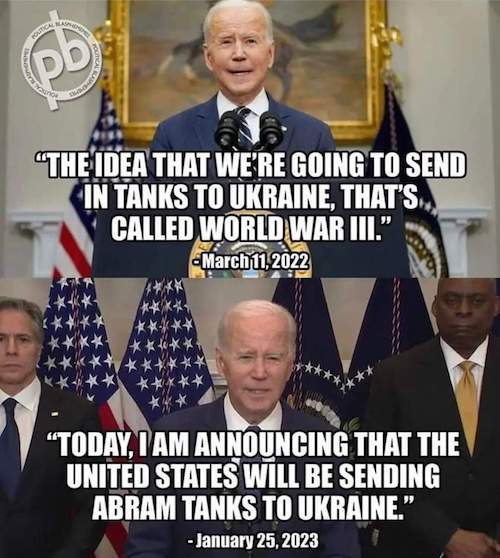



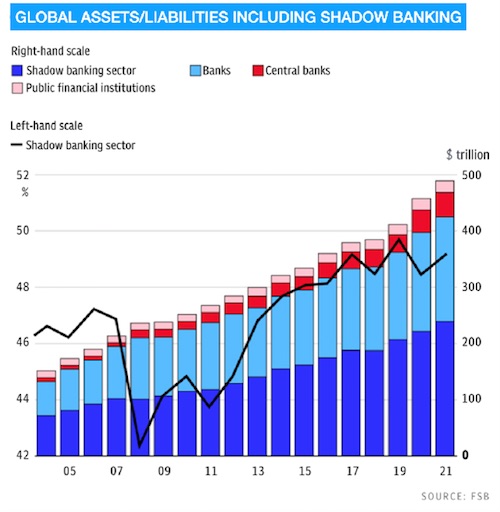



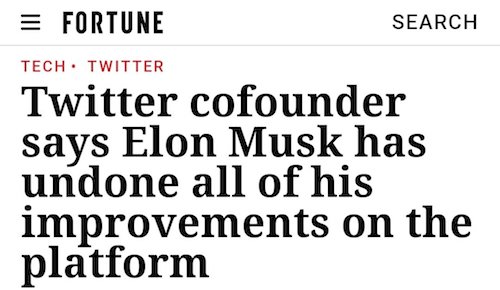









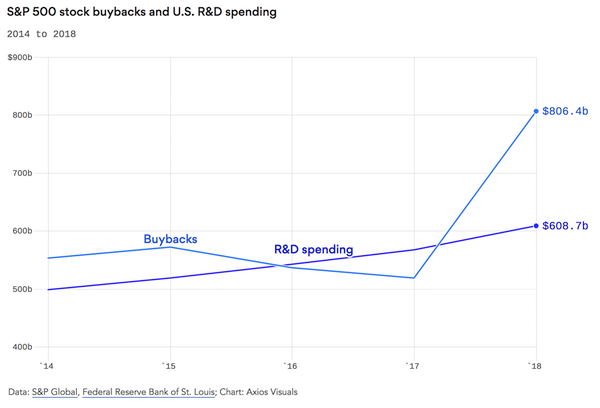
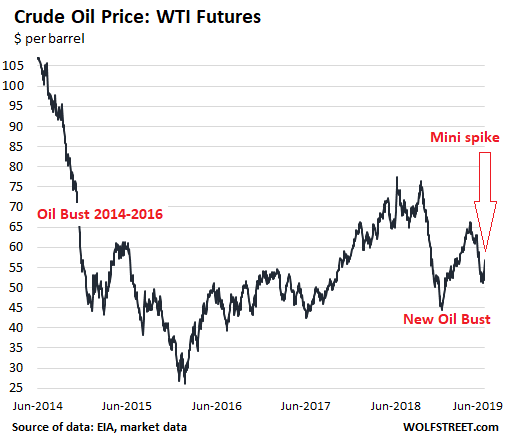


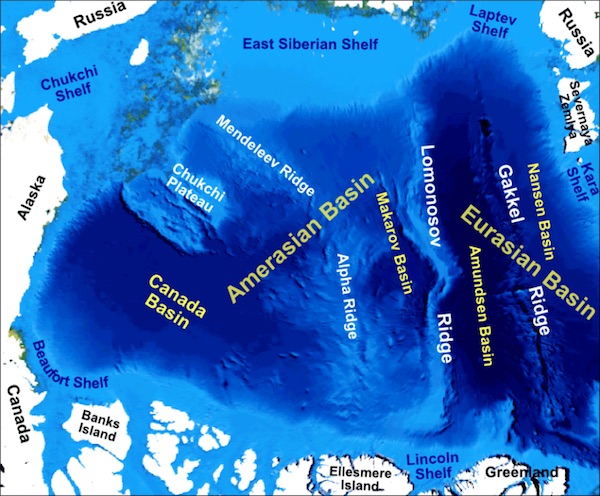
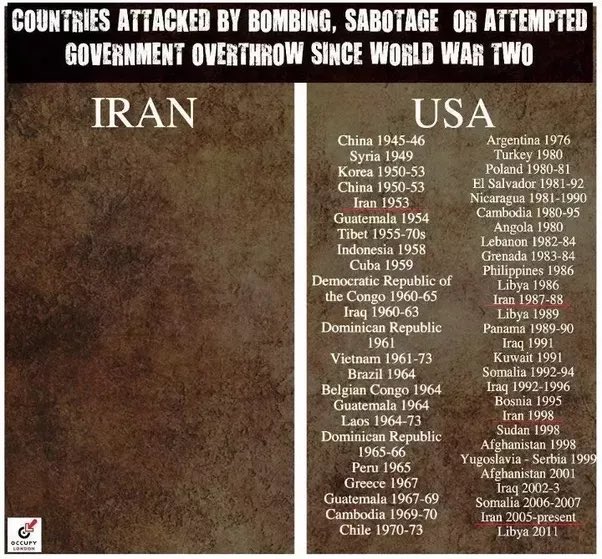








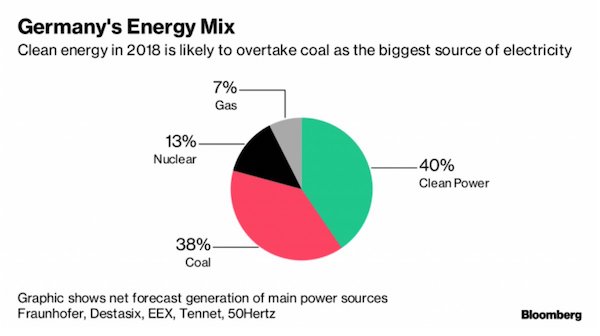

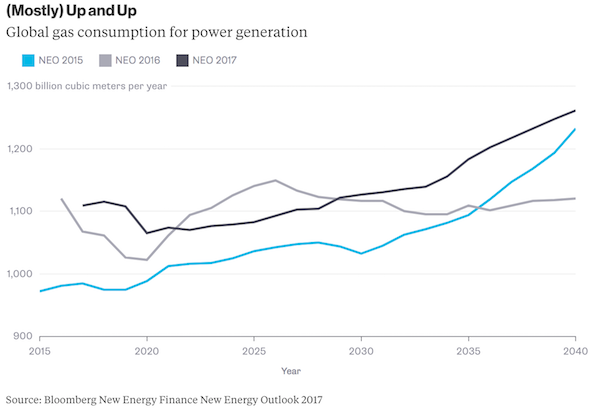
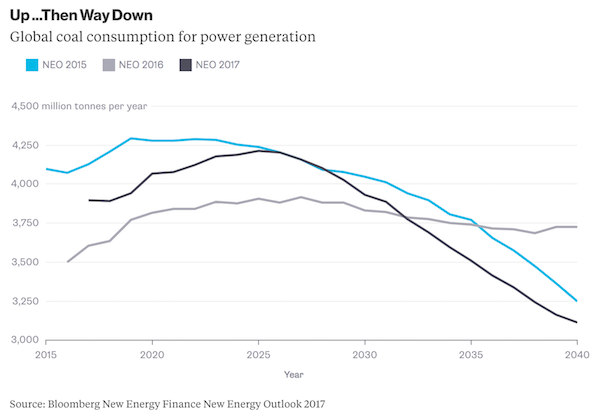


 This question generated a number of comments in the last Blowout so I thought I would take a quick look at it. I find that the electrified portion of the Dutch railway network (Nederlandse Spoorwegen, or NS) runs on grid electricity that comes dominantly from fossil fuel generation (natural gas and coal). NS claims 100% wind power because it has a contract with various wind farms to produce enough energy to power its rail system, but this is just an accounting transaction. Only a small fraction of the power delivered to its trains actually comes from wind.
This question generated a number of comments in the last Blowout so I thought I would take a quick look at it. I find that the electrified portion of the Dutch railway network (Nederlandse Spoorwegen, or NS) runs on grid electricity that comes dominantly from fossil fuel generation (natural gas and coal). NS claims 100% wind power because it has a contract with various wind farms to produce enough energy to power its rail system, but this is just an accounting transaction. Only a small fraction of the power delivered to its trains actually comes from wind.









